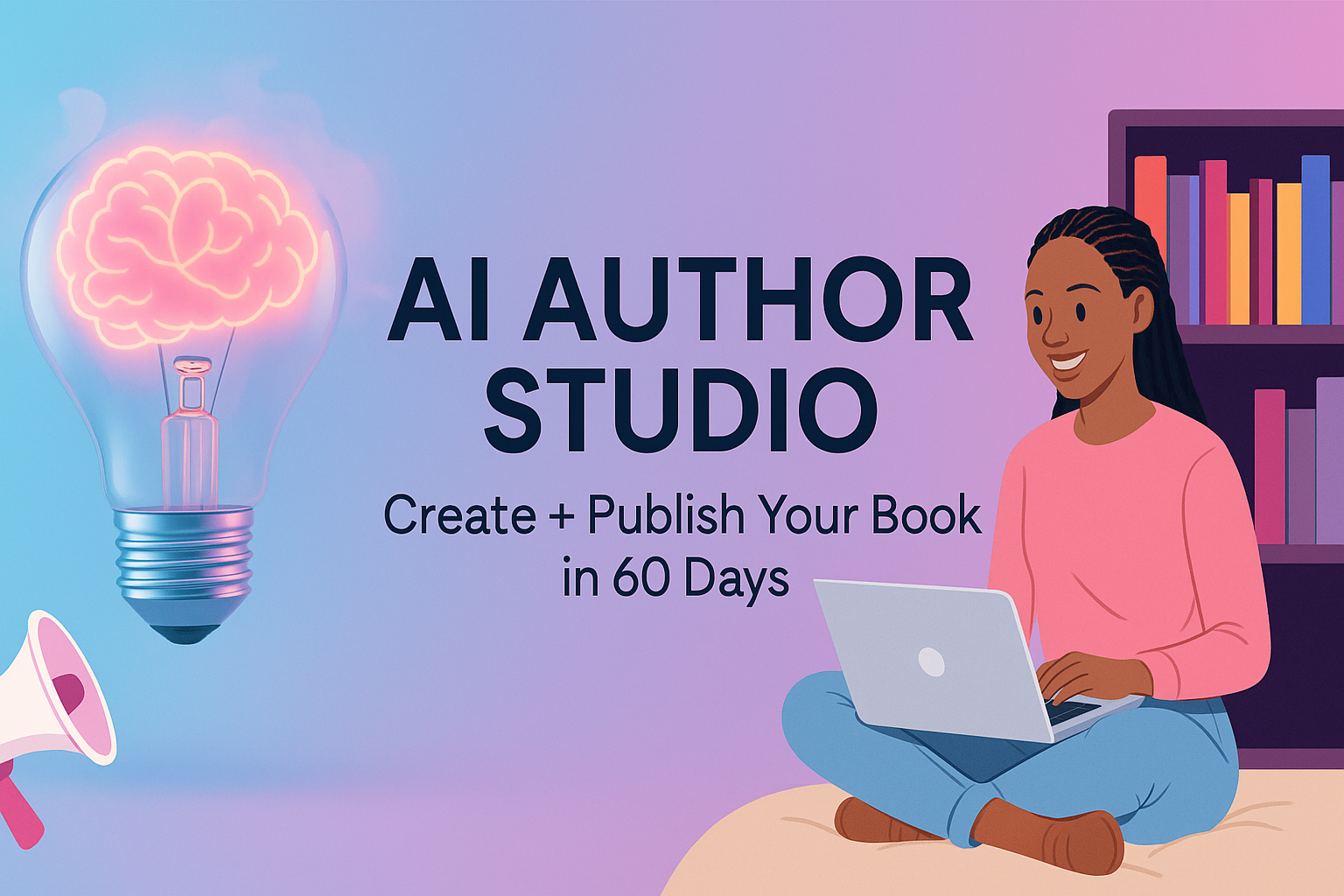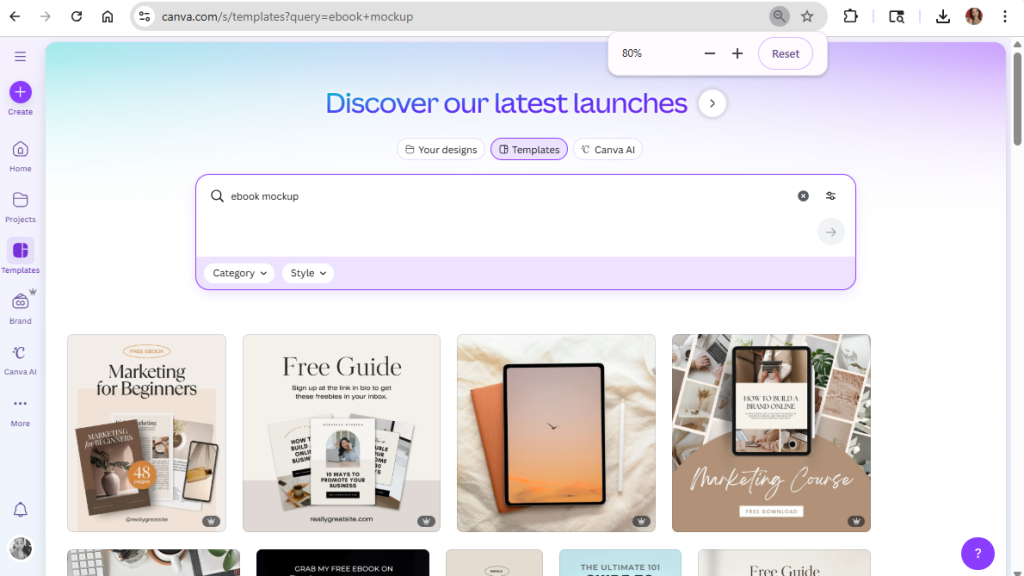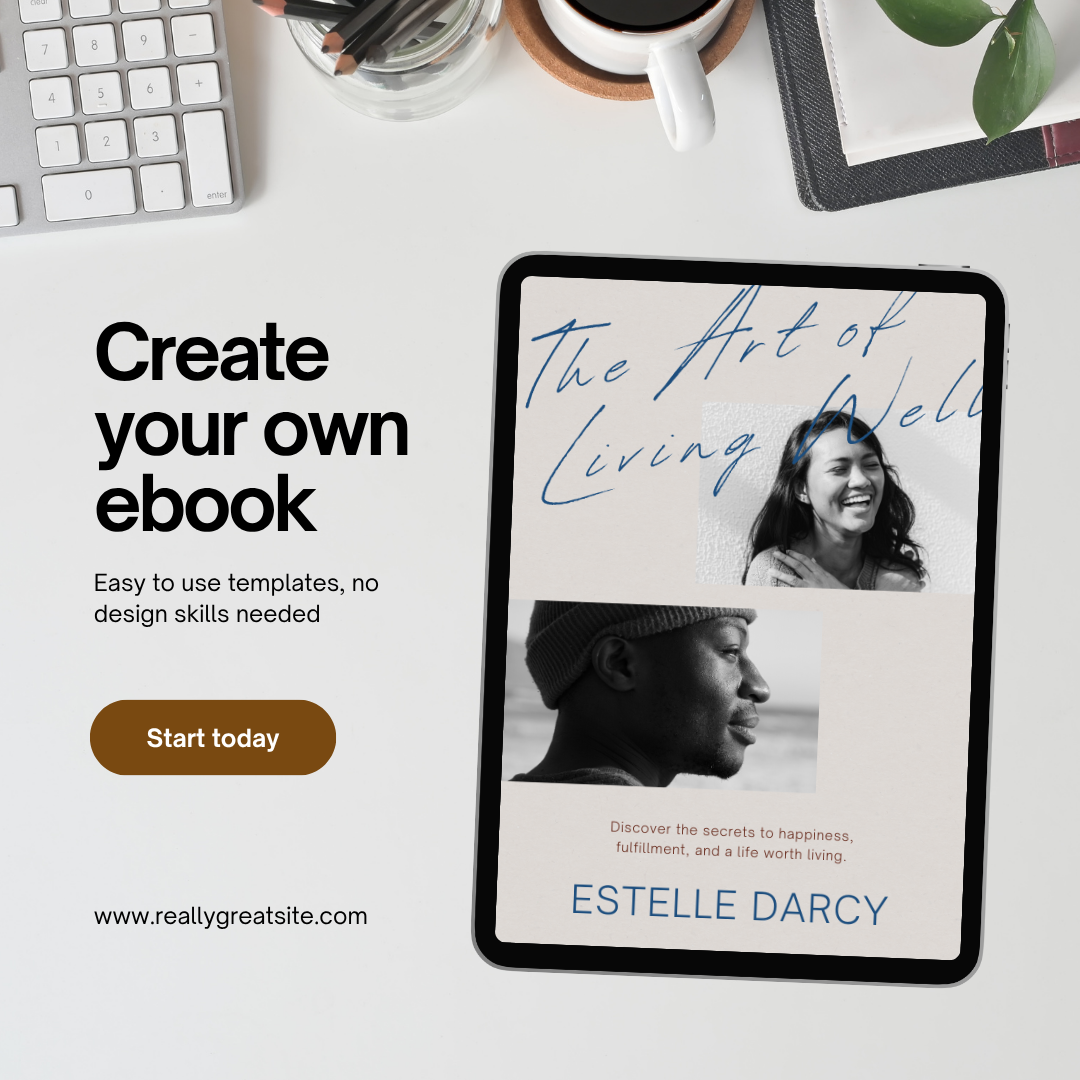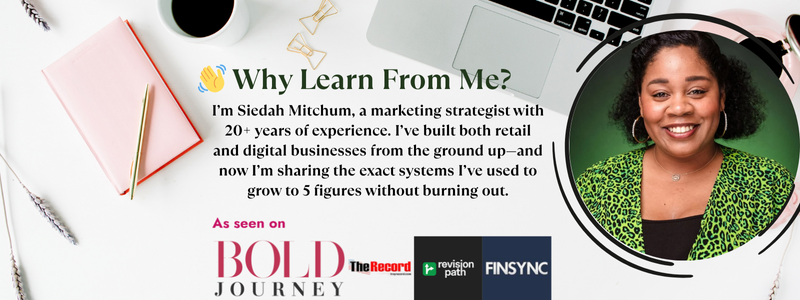
If You Could Create an Entire Ebook in 4 Hours… Would You Finally Launch It?
Every day, thousands of entrepreneurs say, “I want to write an ebook,” but months go by… and nothing is published.
Not because they don’t have the knowledge.
Not because they don’t have the motivation.
But because the process feels overwhelming.
The truth?
Writing an ebook in 2025 doesn’t require three months, a ghostwriter, or locking yourself in a cabin with coffee and stress.
With the right system — and the right use of AI and Canva — you can create a powerful, profitable ebook in just four hours.
In this guide, I’m going to walk you through the exact method I use to write ebooks quickly and efficiently, without sacrificing quality or storytelling. This is the same process I use for my digital products, client projects, and lead magnets across my brand.
Let’s jump in.
1. Identify the Problem You Want to Solve (30 Minutes)
Before you write one sentence, you need clarity.
The fastest way to write an ebook is simple:
➡️ Solve one specific problem extremely well.
Not 10 problems.
Not a full course.
Not a memoir.
One clear problem.
How to validate that people actually want this ebook:
You don’t need complicated research. You can validate an ebook idea in less than an hour by simply asking your audience.
Try:
-
Running a quick poll on Instagram or Facebook
-
Posting 2–3 story slides asking:
“Which topic would you want me to write an ebook about?” -
Asking your email list to vote on options
-
Paying attention to the questions you get repeatedly
-
Checking comments and DMs for patterns
-
Looking at the problems your customers complain about the most
Your ebook should be the answer to a real, repeated problem.
Why validation matters:
Without validation, you’re guessing.
With validation, you’re building based on demand — which means:
✔ higher conversions
✔ easier marketing
✔ less resistance
✔ faster sales
If at least 20–30 people vote, comment, or DM you about an idea… you have a winner.
2. Create a Simple, Clear Outline (45 Minutes)
This is where people overcomplicate things.
Your outline is NOT a college essay.
It’s not meant to be 40 pages of notes.
It’s not supposed to be fancy.
A great outline has four simple components:
(1) Purpose + Promise of the Ebook
Answer these questions:
-
Why does this ebook exist?
-
What will the reader know, understand, or be able to do after reading it?
-
How will this ebook help them move faster, avoid mistakes, or save money?
Example:
“This ebook will help digital creators write a high-quality ebook in 4 hours using AI and Canva.”
Straightforward. Clean. Clear.
(2) Your Story + Their Story
This part builds connection.
Briefly share:
-
Why you care about this topic
-
Your mistakes, lessons, or experiences
-
The “before and after” of your own transformation
-
What your audience is currently struggling with
-
Why this ebook matters right now
People don’t buy ebooks.
People buy clarity, shortcuts, certainty, and energy they can feel.
This is where your authenticity matters.
(3) Break Down Every Step of the Process
This is where your ebook comes alive.
AI loves structure — and it works best with simple inputs.
Break your topic into 4–7 steps.
Each step should include:
-
a short explanation
-
a bullet list of how-to items
-
real examples
-
mistakes to avoid
-
pro tips
This makes writing AND reading easy.
(4) End With a Call to Action
You’re not just writing an ebook…
You’re building a customer journey.
Every ebook should end with:
✔ CTA to join your community
✔ CTA to access bonus tools/checklists
✔ CTA to join your low-cost offer or high-ticket support
✔ CTA for your email list
✔ CTA to follow you on social media
This step alone increases conversions significantly.
3. Design Graphics in Canva Fast (45 Minutes)
This is where everything comes together visually.
You don’t need to be a designer (even though you, Sie, are one 😉). Canva makes this step incredibly fast.
Here’s the exact workflow:
Step 1: Choose a Template
Search keywords like:
-
“ebook”
-
“workbook”
-
“guide”
-
“lead magnet”
-
“minimalist ebook”
Choose one that matches your brand vibe.
Step 2: Replace Branding
Update:
-
fonts
-
colors
-
logos
-
images
-
icon elements
-
header styles
Keep it consistent with your main brand identity.
Step 3: Drop in Your Content
Copy/paste your outline sections into Canva, one page at a time.
Format with:
-
bullet points
-
bold headings
-
colored text blocks
-
pull quotes
-
checklists
-
icons
This makes your ebook feel polished and professional.
Pro Tip:
Design two ebook covers. Post them in your stories. Ask your audience to vote.
You get engagement.
You get validation.
You get content.
And you get a design your audience already feels connected to.
4. Write Your Sales Page Using AI (45 Minutes)
Your ebook is almost done — now you need a page that sells it.
This is where AI becomes your best friend.
You can outline your full sales page in minutes.
Here’s the prompt that works beautifully:
Sales Page Prompt for AI (Copy + Paste):
“Write a high-converting sales page for my ebook in the tone of [insert tone — ex: conversational, confident, storytelling, luxury, bold]. Use the 8 Principles of Sales Psychology.
Here is the outline: [paste your outline].
Here is a sample of my writing so you can match my voice: [paste something you wrote].”
Why this works:
You’re giving AI:
✔ the structure
✔ your tone
✔ the psychology
✔ your voice
✔ your intention
This is how you avoid robotic, generic AI content.
The 8 Principles of Sales Psychology You Should Use:
(credit: Sales Enablement Collective)
-
Find common ground
-
Reduce friction
-
Give people reasons to say yes
-
Make the complex simple
-
Build trust
-
Trigger emotion
-
Use social proof
-
Anchor to the outcome
When you bake these into your sales page, you increase conversions — even if this is your first ebook.
5. Build a Strategic Marketing Plan (60 Minutes)
You can have the best ebook on the Internet…
But if your marketing is weak, people will never see it.
Here’s how to build a simple but powerful plan using the 8 Principles of Sales Psychology:
Step 1: Choose Your Platforms
Pick platforms based on where your audience actually spends time.
Examples:
-
Instagram
-
Facebook Groups
-
Pinterest
-
TikTok
-
YouTube
-
Email list
-
Skool community
Choose 3 distribution channels and show up consistently.
Step 2: Use Sales Psychology in Your Content
Here’s how you apply the 8 principles:
1. Find Common Ground
Create content about the exact problem your ebook solves.
Talk about struggles your audience relates to.
2. Reduce Friction
Create short videos or graphics showing how simple your system is.
3. Give Reasons to Say Yes
Use stories, proof, screenshots, or examples from your ebook creation process.
4. Make It Simple
Create “before vs. after” posts.
Break down your 4-hour process visually.
5. Build Trust
Share behind-the-scenes.
Show your Canva pages.
Show AI prompts you use.
6. Trigger Emotion
Speak to the feeling of finally launching their first product.
Overcoming fear.
Feeling proud of their first digital product.
7. Use Social Proof
Share testimonials, reviews, DMs, or sales screenshots.
8. Anchor to the Outcome
Emphasize how this ebook helps them save time, reduce overwhelm, or make money.
Step 3: Decide if You’ll Run Ads
Ask yourself:
-
Will I run ads to the sales page?
-
Will I promote through influencer marketing?
-
Will I use email automation to nurture readers?
You don’t need ads, but if your ebook is $19–$47, a $5–$10 daily ad budget can help it scale.
Final Thoughts: You Can Create an Ebook Faster Than You Think
You don’t need perfection.
You need:
✔ one problem
✔ one solution
✔ one clear outline
✔ one Canva template
✔ one sales page
✔ one marketing plan
With AI and Canva, the process is faster, easier, and more accessible than ever.
You’re not “creating a product.”
You’re creating a pathway for someone who needs your help.
You’re turning your knowledge into impact.
You’re turning your story into income.
You’re turning your experience into something that lasts.
Now that you have the roadmap, the only thing left is action.
If you want help building digital products, systems, and recurring revenue…
You don’t have to create alone.
This is your season to build, publish, and profit — with ease.






Leave a Reply